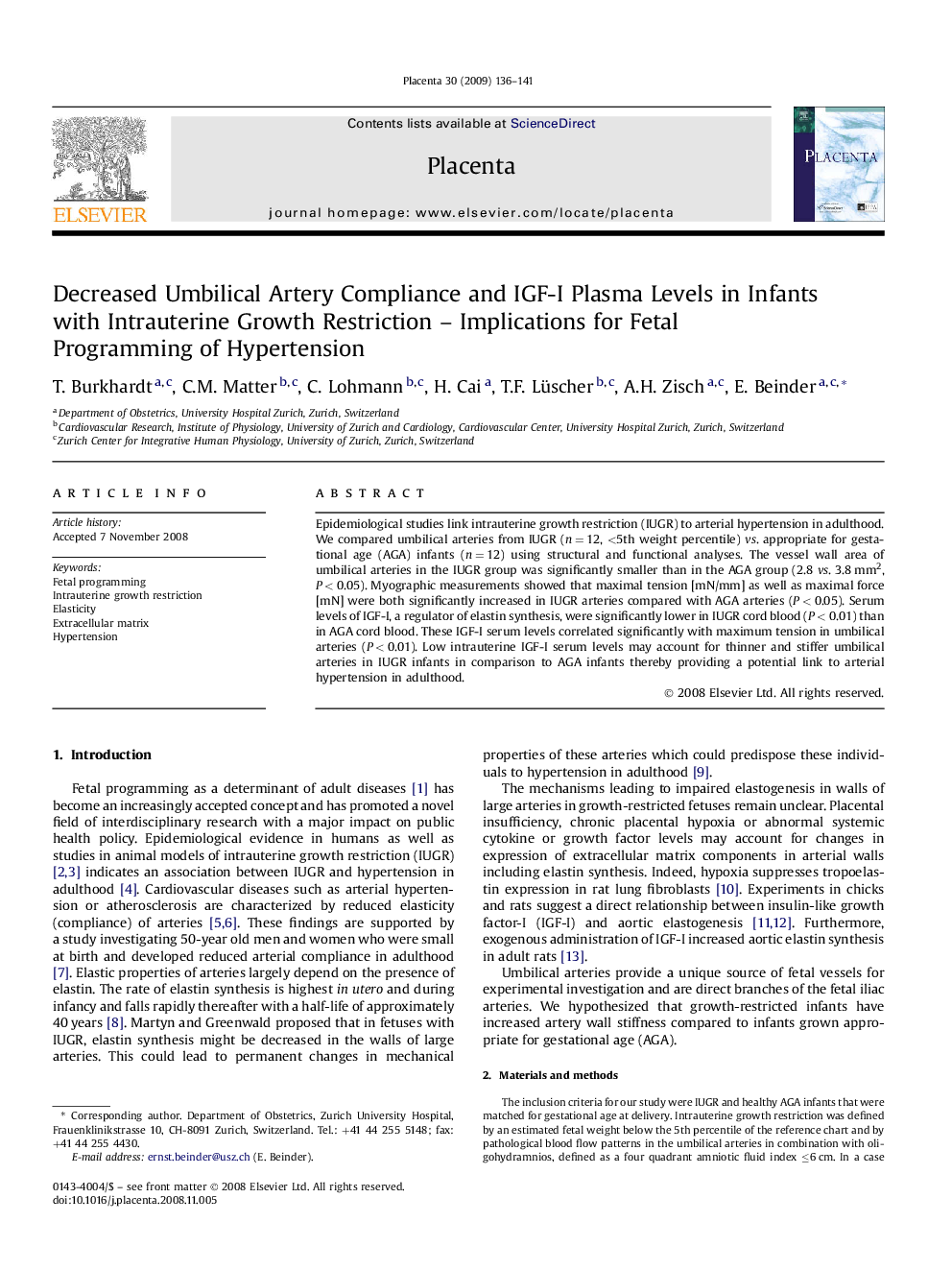| Article ID | Journal | Published Year | Pages | File Type |
|---|---|---|---|---|
| 5896230 | Placenta | 2009 | 6 Pages |
Abstract
Epidemiological studies link intrauterine growth restriction (IUGR) to arterial hypertension in adulthood. We compared umbilical arteries from IUGR (n = 12, <5th weight percentile) vs. appropriate for gestational age (AGA) infants (n = 12) using structural and functional analyses. The vessel wall area of umbilical arteries in the IUGR group was significantly smaller than in the AGA group (2.8 vs. 3.8 mm2, P < 0.05). Myographic measurements showed that maximal tension [mN/mm] as well as maximal force [mN] were both significantly increased in IUGR arteries compared with AGA arteries (P < 0.05). Serum levels of IGF-I, a regulator of elastin synthesis, were significantly lower in IUGR cord blood (P < 0.01) than in AGA cord blood. These IGF-I serum levels correlated significantly with maximum tension in umbilical arteries (P < 0.01). Low intrauterine IGF-I serum levels may account for thinner and stiffer umbilical arteries in IUGR infants in comparison to AGA infants thereby providing a potential link to arterial hypertension in adulthood.
Related Topics
Life Sciences
Biochemistry, Genetics and Molecular Biology
Developmental Biology
Authors
T. Burkhardt, C.M. Matter, C. Lohmann, H. Cai, T.F. Lüscher, A.H. Zisch, E. Beinder,
